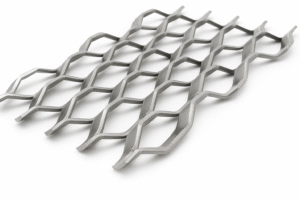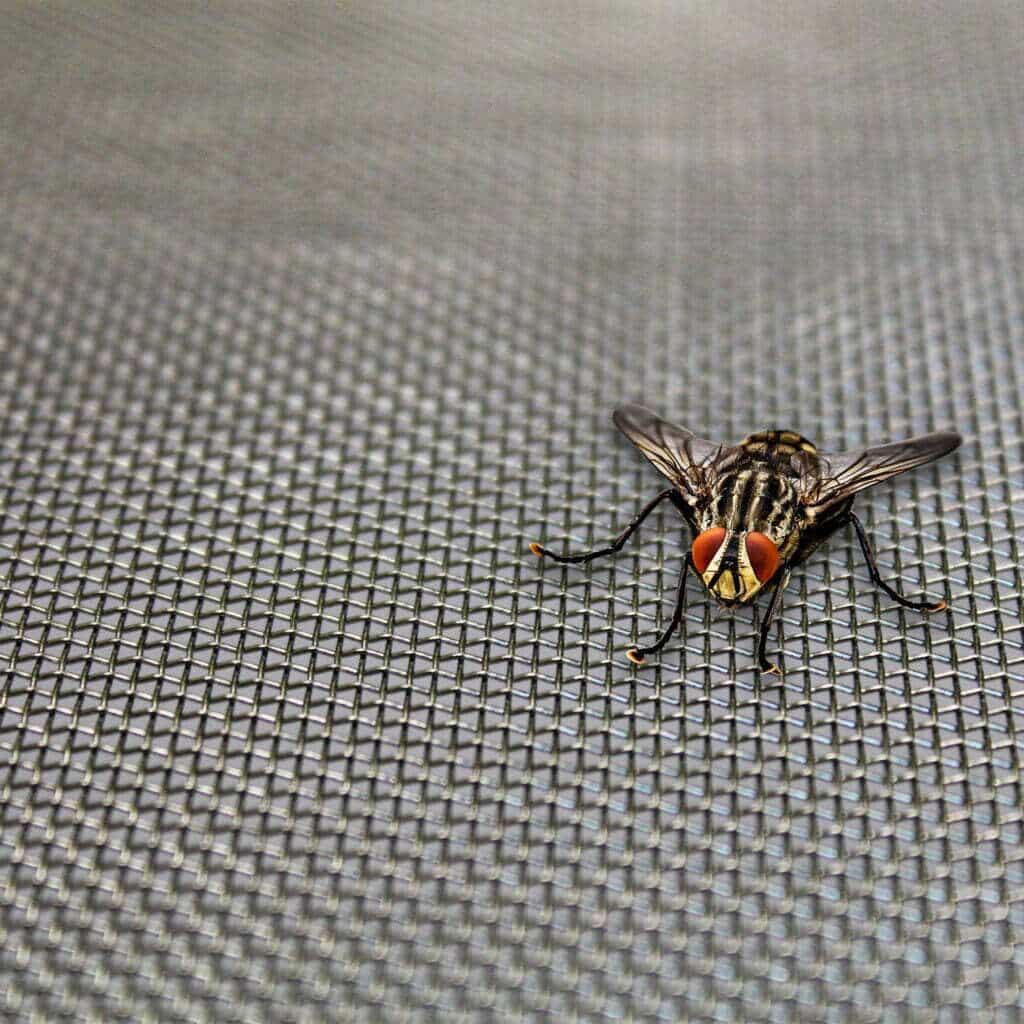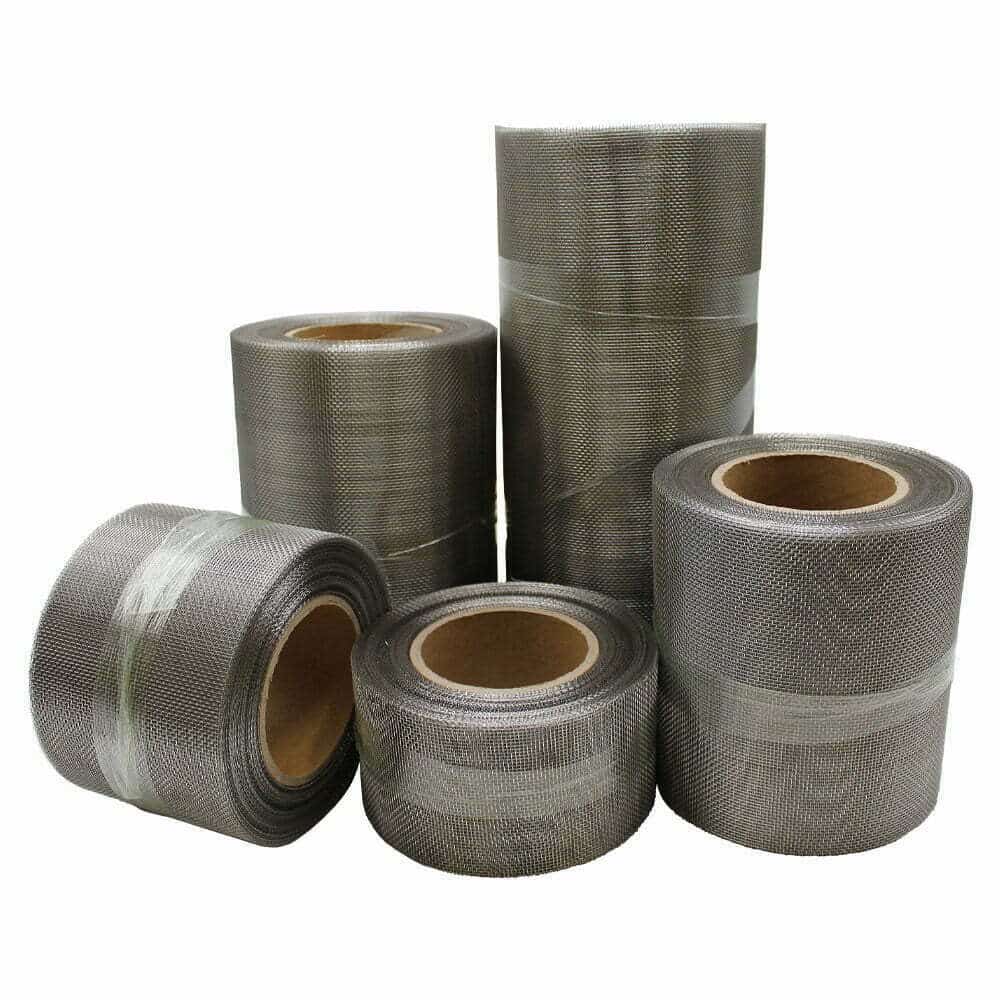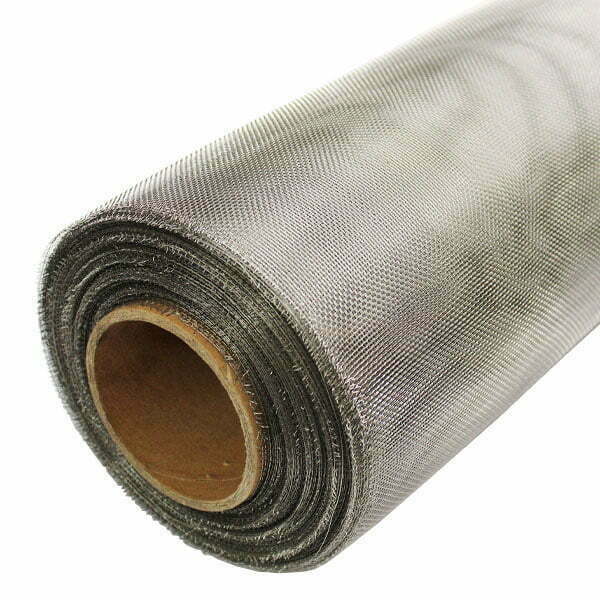









Stainless steel insect mesh is a versatile and durable material that is commonly used to keep insects and other pests out of homes and buildings. Made from high-quality stainless steel, it is resistant to corrosion and can withstand harsh weather conditions.
Whether you’re looking to protect your home or business from unwanted pests, stainless steel insect mesh is a reliable and effective option to consider.
In this blog, we will dive deeper into all things insect mesh, exploring its construction, properties, and applications. We will discuss the different types of metals available and their specific uses, as well as the factors that should be considered when selecting a mesh for a particular application. This blog will provide you with a comprehensive understanding of this popular woven mesh and its importance in modern industry.
Let’s get into it.,…

Stainless steel insect meshing is a popular and highly effective choice for keeping out flies and other flying insects, thanks to its numerous benefits and advantages. Here are some of the reasons why stainless steel insect meshing is a great choice:
Durable and long-lasting: This bug screen is a strong and durable material that is resistant to rust, corrosion, and other types of damage. It can withstand exposure to the elements, making it a great choice for outdoor use.
High-quality screening: It has a fine mesh structure, which can effectively prevent even the smallest of insects from passing through. This makes it an ideal choice for areas where tiny insects, such as gnats or midges, are a problem.
Aesthetically pleasing: Stainless steel insect meshing has a sleek and modern appearance that can enhance the look of windows, doors, and other openings. It is also available in a range of different colours to match different design schemes.
Easy to clean and maintain: It is easy to clean and maintain, and can be washed with soap and water or other mild cleaning solutions. It is also resistant to damage from cleaning solutions and can be wiped down without the risk of damage.
Fire-resistant: Stainless steel is a non-flammable material, making it an excellent choice for areas where fire safety is a concern.
Here are some of the most common alternatives to stainless steel insect mesh:
Aluminium insect mesh: Aluminium mesh is a lightweight and durable option that is resistant to rust and corrosion. It is also relatively easy to install and maintain, making it a popular choice for a variety of applications.
Fibreglass insect mesh: Fibreglass mesh is a lightweight and flexible option that is resistant to tearing and other types of damage. It is also easy to install and clean, making it a popular choice for windows and doors.
Copper insect mesh: Copper mesh is a strong and durable option that is resistant to corrosion and can also provide some protection against certain types of rodents and other pests. It can also develop a natural patina over time, giving it a distinctive appearance.
PVC-coated polyester insect mesh: This type of mesh is made from a polyester base that is coated in PVC, which provides added durability and resistance to damage. It is also available in a range of colors to match different design schemes.
Bronze insect mesh: Bronze mesh is a strong and durable option that is resistant to corrosion and can provide a unique and distinctive appearance.
Stainless steel insect mesh does not inherently attract insects. In fact, the fine mesh structure and durability of stainless steel mesh make it a highly effective barrier against flies and other flying insects.
However, it is possible for insects to be attracted to areas around the mesh if there are other factors present that may be attracting them, such as food, water, or shelter. It is important to maintain a clean and well-ventilated environment around the mesh to minimize the risk of insect attraction.
Additionally, it is possible for dirt and debris to accumulate on the surface of the mesh over time, which can create areas where insects can potentially feed or lay eggs. Regular cleaning and maintenance of the mesh can help to prevent these issues and ensure that the mesh remains effective in keeping out insects.
304 grade stainless steel is a type of austenitic stainless steel that is commonly used in a wide range of industrial and commercial applications, including for the manufacturing of stainless steel insect mesh. Here are some of the key characteristics and properties of 304 grade stainless steel:
Corrosion-resistant: It is highly resistant to corrosion and oxidation, making it an ideal choice for use in outdoor or humid environments.
High strength: 304 grade stainless steel has a high tensile strength and can withstand a wide range of mechanical stresses and forces.
Ductility: It is highly ductile, which means it can be easily formed or shaped without cracking or breaking.
Heat-resistant: It is resistant to high temperatures and can withstand exposure to heat without degrading or losing its strength.
Hygienic: It is non-porous and non-absorbent, which makes it an ideal choice for use in applications where hygiene is important, such as in food processing or medical equipment.
Aesthetic: 304 grade has a bright and polished appearance, which can enhance the look of products or applications where appearance is important.
Our insect mesh is always woven wire mesh. Woven wire mesh can be made to finer hole sizes than perforated or welded, so it is the way to go for blocking insects.
Woven wire mesh refers to a type of material that is made by interweaving wires in a pattern to form a mesh structure. This material is commonly used in a variety of applications, including construction, industrial manufacturing, and filtration. In construction, woven wire mesh is used as reinforcement in concrete and masonry structures, as well as for fencing and security barriers. In industrial manufacturing, it is used for strainers, filters, and sieves, as well as for vibrating screens and drying ovens. Woven wire mesh can also be used in filtration systems, such as in water treatment plants, to remove impurities from liquids and gases.
You can choose to order as much material suits your requirements.
Woven mesh is usually made and stocked as 30 metre (100ft) x 1.2 metre (4ft) rolls. So we have made it available by the metre straight off the roll.


We have also cut it down into small roll widths to suit those who want to use this to block vents or repair soffits.
These rolls are between 75mm and 400mm. The most common is 100mm.
We recently wrote a detailed blog all about soffit vent mesh, which we recommend to read before orders mesh for that application.
The process of installing insect mesh can vary depending on the specific type of mesh and the application it is being used for. However, here are some general steps to install insect mesh:
Measure the area: Measure the length, width, and height of the area you want to install the insect mesh on. This will help you determine the amount of mesh you need to purchase.
Prepare the surface: Clean the surface where the mesh will be installed and make any necessary repairs. Ensure that the surface is smooth and free of debris.
Cut the mesh: Cut the insect mesh to the correct size, leaving a few inches of excess on each side.
Attach the mesh to the frame: Use metal or plastic clips, screws, or a combination of both to attach the mesh to the frame. Make sure the mesh is tight and secure.
Seal the edges: Use silicone caulk or another sealant to seal any gaps between the mesh and the frame. This will prevent insects from entering through the edges.
Install the frame: Install the frame into the opening, using screws or other fasteners to secure it in place.
Finish the installation: Finish the installation by trimming any excess mesh and applying a final coat of sealant to the edges.
Stainless steel insect mesh can last for a long time, depending on various factors such as the quality of the material, the conditions in which it is used, and the level of maintenance it receives. High-quality stainless steel insect mesh is corrosion-resistant and can withstand harsh weather conditions and UV rays. With proper installation and maintenance, stainless steel insect mesh can last for many years, often up to 20 years or more. However, if the mesh is exposed to harsh environmental conditions such as strong acidic or alkaline substances, or if it is not properly maintained, it may deteriorate more quickly. To ensure the longevity of stainless steel insect mesh, it is important to follow the manufacturer’s guidelines for installation and maintenance.
We cut this mesh with standard kitchen scissors. Simple.
As always, thank you for checking out our blog. We hope that this helps you with your project. We try to launch a couple of new guides every week. Eventually we will have covered everything there is to cover about mesh.
Our goal for our blogs and help guides is to answer as many questions as possible to help to explain the possibilities of mesh to our customers. Contact our team today if you have any questions at all. We are always really keen to help in any way that we can.